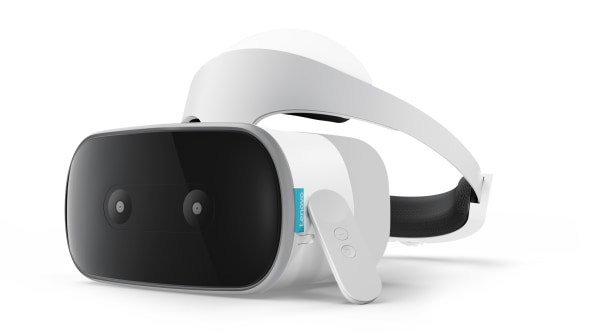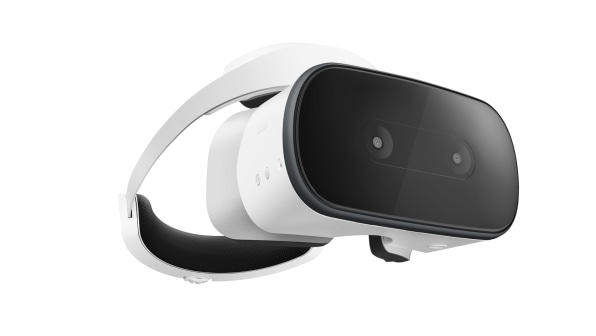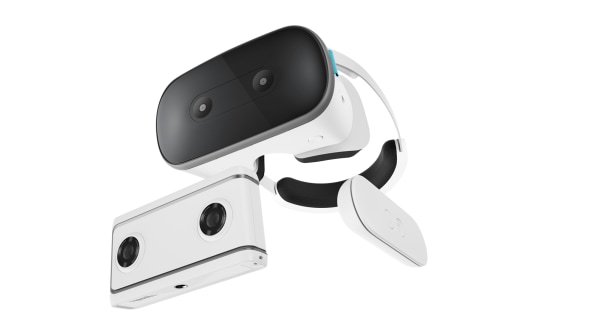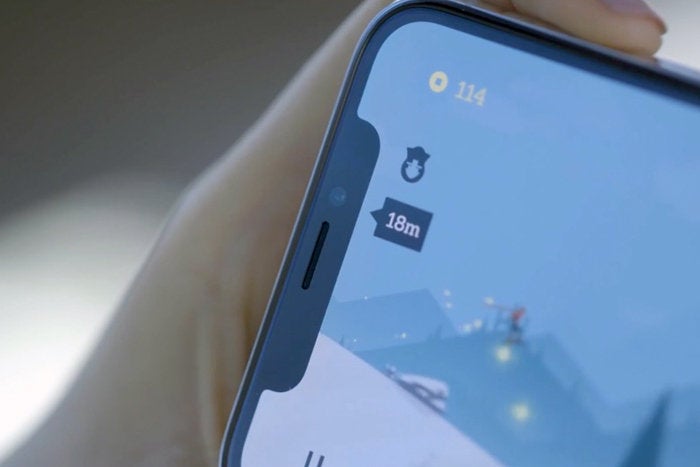Categories
Agency
CES
Digital Advertising
LG
LG G7
Map Brain
Sintex Plastics: Business under transition; balance sheet repair the key focus area
Tech
Technology
Transformation
World
apple
apps
business
cyber
cyber security
facts
fashion
feature
hacking
i Phone
iphone
iphone x
knowledge
mobile
mobiles
new
new tech
news
pc
phones
review
reviews
sale
security
smartphone
social media
tips
top 10
upcoming
x
Categories
Popular Posts
-
Sintex Plastics: Business under transition; balance sheet repair the key focus area While company’s strategic move to focus on balan...
-
4 tips to get more out of social media 1. Analyse your competitor 2.Follow the latest trends 3.Stay up-to-date 4.Be activ...
-
No customers, no business! Customers are the lifeline for every business. They act as a focal point in deciding the future of a...
Ads 160x600
Join with us!
Navigation List
RECENT$type=list-tab$date=0$au=0$c=5
- Agency
- apple
- apps
- business
- CES
- cyber
- cyber security
- Digital Advertising
- facts
- fashion
- feature
- hacking
- i Phone
- iphone
- iphone x
- knowledge
- LG
- LG G7
- Map Brain
- mobile
- mobiles
- new
- new tech
- news
- pc
- phones
- review
- reviews
- sale
- security
- Sintex Plastics: Business under transition; balance sheet repair the key focus area
- smartphone
- social media
- Tech
- Technology
- tips
- top 10
- Transformation
- upcoming
- World
- x
Agency,1,apple,1,apps,1,business,3,CES,1,cyber,3,cyber security,3,Digital Advertising,2,facts,1,fashion,2,feature,1,hacking,1,i Phone,1,iphone,1,iphone x,1,knowledge,2,LG,1,LG G7,1,Map Brain,1,mobile,1,mobiles,1,new,1,new tech,4,news,4,pc,1,phones,2,review,1,reviews,1,sale,1,security,3,Sintex Plastics: Business under transition; balance sheet repair the key focus area,1,smartphone,1,social media,3,Tech,4,Technology,18,tips,1,top 10,11,Transformation,1,upcoming,2,World,1,x,1,
ARCHITECT$type=one$count=3
- Agency
- apple
- apps
- business
- CES
- cyber
- cyber security
- Digital Advertising
- facts
- fashion
- feature
- hacking
- i Phone
- iphone
- iphone x
- knowledge
- LG
- LG G7
- Map Brain
- mobile
- mobiles
- new
- new tech
- news
- pc
- phones
- review
- reviews
- sale
- security
- Sintex Plastics: Business under transition; balance sheet repair the key focus area
- smartphone
- social media
- Tech
- Technology
- tips
- top 10
- Transformation
- upcoming
- World
- x
/fa-fire/ YEAR POPULAR$type=one
-
Sintex Plastics: Business under transition; balance sheet repair the key focus area While company’s strategic move to focus on balan...
-
4 tips to get more out of social media 1. Analyse your competitor 2.Follow the latest trends 3.Stay up-to-date 4.Be activ...
-
No customers, no business! Customers are the lifeline for every business. They act as a focal point in deciding the future of a...
-
Traditionally, the industry has been using waterfall method for development and project management is its concept. A simple sof...
Technology
gridpost/Technology
Articles by "news"
Why Is WhatsApp Worth $19B? How Do Free Apps Make Money?
Some build apps for fun. Others for profit. No matter your interest in apps, here is something for you: Facebook just purchased WhatsApp…for $19 billion. $19 billion—yes, with a “b”!
What? Why? How Is It Possible For A Free App To Be Worth So Much Money?
WhatsApp isn’t entirely free, but we will get to that later. Built to be a “better SMS alternative,” according to the company’s website (SMS stands for short message service; better known as text messaging), WhatsApp allows for cross-platform messaging – across the globe – with users not having to pay for the texts they send and receive. Instead, WhatsApp “uses the same internet data plan that you use for email and browsing.”
Sounds Cool. Sounds Neat. But Does It Sound Like $19 Billion?
Summarizing the details of a recent Forbes.com post, WhatsApp is worth the price tag to Facebook because: it will help the social network grow globally, it is the new SMS, it will be (and has already been) coveted by other companies, and it “is the only app we’ve ever seen with higher engagement than Facebook itself,” according to Mark Zuckerberg.
Moving away from WhatsApp in particular, and just looking at the transaction on a very basic level…$19 billion for an app; a little piece of software downloaded on your mobile device. What else could you buy for that sum of money instead? How about the most valuable sports franchise in the world, Manchester United (valued at $2.23B by Forbes.com), along with Real Madrid ($1.88B), the New York Yankees ($1.85B), the Dallas Cowboys ($1.85B)…get the picture? It’s easier to wrap your head around the value of these teams. Man U has over 650 million fans, the Yankees own a piece of the most profitable regional sports network in the country. Value here is more tangible.
But How Does An App Like WhatsApp Make Money?
Most apps generate revenue through the following practices:
1. App Purchases
Just like other products, apps earn money when they are purchased. $.99 per purchase might not sound like a whole lot, but it adds up (Angry Birds sells for $.99, just saying). Then of course you look at an app like Minecraft: Pocket Edition that sells for $6.99 and made $1 million in iOS App Store revenue—on Christmas day alone.
For WhatsApp specifically, the app costs about $1 to download…but that price tag is only present in certain countries. Other users around the globe actually get to experience the app for free for year one, but then pay $1 for each year following.
2. The “Freemium” Model
3. Advertisements
You’ve probably noticed advertisements on your favorite apps. (How can you ignore them?) Just like ads on social networks, in magazines, on TV, etc. companies pay for their products and services to be seen within mobile apps. While WhatsApp hasn’t yet cashed in on this tactic, other SMS apps, like WeChat, which is well known in China, has both apps and online games. With only 440 million users, WeChat turned in $924 million in revenue in 2014’s third quarter.
All of this considered, there is one big thing missing. I mean, WhatsApp earns $1 per download on iOS and $1 per year on other platforms (and not even for every user). Even with a large user base, the company’s revenue might only be hundreds of millions of dollars. Thus, there is a large, unfilled gap between hundreds of millions and $19 billion.
So why was so much offered for WhatsApp? Because that is how much the app is worth to Facebook. 450 million users at the time of purchase, growth opportunity, future prospects, behavioral data, contact lists, keeping the app out of the hands of competitors. All of these things have a price tag. And a hefty one, it appears.
What Does The Future Hold?
If I had such a future-telling capability, I’d probably consider using it on something other than predicting WhatsApp’s next move. But, it’s fun to think about. Above all else, growth prospects are tremendous. As with most apps, and especially with a messaging app, one person in a group of friends downloads, then the rest follow. Then, the social groups of those people all take to adoption, and so on as the app branches out from one group to the next. Taking both the app’s existing and quickly expanding user bases into consideration, WhatsApp is primed for profiting when the time comes.
So, just something to keep in mind when building your own apps. There are many ways to get compensated for your creations, but who knows the value others will place on them.
Google And Lenovo Unveil The First High-Quality Stand-Alone VR Headset
Google And Lenovo Unveil The First High-Quality Stand-Alone VR Headset
For more than two years, consumer virtual reality has been in 1.0 mode. The first generation of VR devices needed to be linked to either an external PC or a smartphone from the likes of Facebook-owned Oculus, HTC, Google, Sony, and a few others. But this year, we’ll see the beginnings of VR 2.0: Stand-alone headsets.
Today, Google and Lenovo pulled back the wraps on their entrant into the stand-alone VR world, the Mirage Solo, a device that has all its computing onboard, and which is capable of positional tracking with no external sensors.
Stand-alone VR is one of the innovations that could help virtual reality become a truly mainstream technology given that it does away with all the cables and wires that weigh down the user experience on systems like the Oculus Rift or HTC Vive. Although analysts predict that VR will be a $38 billion industry by 2026, it has been slow to gain traction with consumers. And while things like lower hardware prices, more and better content, and improved social experiences will help, innovations in the hardware, like the release of stand-alone headsets, is likely to be a major boon for the industry.
Lenovo’s Mirage Solo incorporates Google’s Daydream VR platform, meaning it joins an ecosystem that currently includes 15 Daydream-compatible smartphones. But while Daydream to date has offered a 1.0 VR experience that’s far less capable than higher-end (and more expensive) devices like the Oculus Rift or HTC Vive, the Mirage Solo vaults Google’s platform into the so-called “six degrees of freedom,” or 6DOF, arena. That means that rather than simply being in the center of a 360-degree view, users of the new device will be able to, as Google vice president of virtual and augmented reality Clay Bavor put it in a blog post, “duck, dodge and lean, and…step backwards, forwards, and side to side” in VR experiences.
VR systems featuring 6DOF enable much richer content given that people can move around in three-dimensional space rather than being limited to the center of a 360-degree view.

Although neither Google nor Lenovo has yet revealed the price of the Mirage Solo, the device is expected to be available in the second quarter of 2018. Bavor said last year that he expected third-party-manufactured WorldSense devices–which will feature a reference design from Google that’s based on Qualcomm’s Snapdragon 835 chipset–to cost roughly the same as “desktop devices.”
That was a clear reference to the Oculus Rift and the HTC Vive, which at the time cost $599 and $799, respectively. However, the Rift now sells for $399, and the Vive for $599, so it’s not clear if the Mirage Solo will be able to match either of those prices. Google’s own Daydream View headset, which works with smartphones like the Google Pixel, and doesn’t offer positional tracking, costs $99.
One additional dynamic that Google did not expect when it announced stand-alone headset technology at I/O last year was that its only manufacturing partner on WorldSense-compatible systems would be Lenovo. Initially, Google said it would be working with both Lenovo and HTC on stand-alones, but in November, Google and HTC unexpectedly canceled their plans for a stand-alone Daydream Vive headset.
Instead, HTC said it was focusing its stand-alone work on a device called the Vive Focus, which it plans on selling only in China. At the time, an HTC spokesperson told Fast Company that “We still have a great relationship with Google…but [we] will not be bringing a stand-alone device to Western markets on Daydream.”
And despite the announcements from each company, it’s too early to tell which will be first to market with a stand-alone headset.
At its own developers event in October, Oculus announced both the Oculus Go, a $199 mobile-quality stand-alone headset without positional tracking that should be available in “early” 2018. As well, it said it would start shipping developer kits for its high-end stand-alone headset, code-named Santa Cruz, by October, 2018.

It’s impossible to say at this point where the Mirage Solo will fall in the VR quality spectrum, in spite of being based on WorldSense, and its pricing likely being similar to that of the Rift and Vive. In a test of Oculus’s Santa Cruz in October, Fast Company found the experience of that device to be similar to Rift, with the added benefit, of course, of having no cumbersome wires. In his blog post, Bavor said Mirage Solo features high-performance graphics, a wide field of view, and an advanced blur-free display. If so, it’s fair to imagine the new device being very much a high-quality system on par with Rift and Vive, and better than Sony’s mid-range PlayStation VR.
Yet Mirage Solo will also be compatible with the existing Daydream catalog of more than 250 apps and games, including native Google apps like YouTube, Street View, Photos, and Expeditions. Given that the Mirage Solo features positional tracking, one would imagine that the device will also be capable of running Google’s own high-quality VR experiences, Google Earth VR and Tilt Brush. But Google hasn’t yet said anything about that.

In the meantime, Google wants to help seed the Daydream ecosystem with more content, including users’ own photos and videos. That’s why it developed the VR180 format, which offers high-quality stereoscopic photos and video–meaning that what’s close to the camera looks close to viewers, while what’s far away looks far away. When viewed on mobile or desktop, VR180 videos look the same as normal 2D YouTube content, with the edges on both side cropped. But when watched on a VR headset, viewers will see 180 degrees of high-quality, stereoscopic immersive video. In short, Google hopes the format will make creating high-quality VR videos cheap and easy for everyone
Created by Google-owned YouTube, VR180 was first announced last summer. At the time, the company said manufacturers like LG, Lenovo, and Yi were working on VR180 cameras that were expected to be released later in 2017. Now, Google says consumer-grade VR180 cameras from Lenovo and Yi will be available this spring, while one from LG will be released later this year. Panasonic will also build VR180 support into its GH5 cameras, and the professional-quality Z Cam K1 Pro, which costs $2,995, launched recently.
How iPhone X changes things
It should be clear by now that Apple’s big bet on the iPhone X is working out just fine. Millions of people appear to be picking them up, but what does the new device tell us about the next decade of smartphones?
Face, the obvious
Biometric ID has come of age.
From Touch ID fingerprint sensors to face recognition systems and whatever comes beyond. It’s not impossible to speculate that one day our solutions will even be able to recognise us through a combination of biometric signals: fingerprint, face, pulse, even by blood type as mobile sensor development accelerates.
That’s important – iPhone X also signals that in future our device security will not rely on a single security flag, but on multiple protections: you still need a strong passcode even when using Face ID. We can anticipate the gradual evolution of multiple, complementary forms of biometric ID.
Pushing the boundaries
That security is becoming more biometric should raise a few red flags. The most obvious being that people will now work to subvert biometric security.
There have already been a couple of over-reported claims in which researchers are said to have undermined Face ID security with masks. In previous year’s we have heard similar claims around Touch ID and use of fingerprint ‘gloves’ stolen from in-depth analysis of pictures stolen from photos in the public space.
Security has always been a cat-&-mouse game. There’s no reason the importance of that game will reduce in an era during which everything will become connected.
Privacy and surveillance
Another concern must be that while we know Apple keeps its Face ID data in a secure enclave that lives only on the device, other firms promising similar biometrics may not be so committed to security.
This may mean the evolution and eventual leak of biometric data concerning many users, which could be undermined with poor intent.
We can also imagine such data being used against citizens by totalitarian governments.
It seems likely the privacy versus public security argument will continue across the next decade.
Different worlds
AR, Animoji, and even Animoji Karaoke all signal a new evolution in computing interfaces. These augmented spaces introduce new paradigms in creativity, application design, and communication.
However, to my mind the most interesting potential of all the technology held inside the so-called “Notch” is the potential for new breeds of gesture-based control and emotional sensing that I believe will become foundational in the creation of next-generation virtual computing user interfaces.
Now your iPhone can sense your movement and identify your face, it seems inevitable that it will eventually become capable of responding to gestures, as well as voice and touch.
Everything machines
Just like his fallen friend and former boss, Apple’s Chief Designer, Jony Ive, always seems to speak truth couched in riddles.
Speaking to Wallpaper, he said:
“I’ve always been fascinated by these products that are more general purpose. What I think is remarkable about the iPhone X is that its functionality is so determined by software… because of the fluid nature of software, this product is going to change and evolve. In 12 months’ time, this object will be able to do things that it can’t now.”
If you think about the powerful A-series processor inside the iPhones X and 8. If you consider their sophisticated graphics performance, and mentally compare the capability of these machines with computing devices, it becomes clear that, iteration by iteration, the smartphone is replacing many of the general-purpose tasks previously transacted on a computer.
All it takes is the software to run that task.
Today’s iPhone X is already quite capable of doing much more than last year’s iPhone, now it’s up to the developers to create solutions that fully exploit that power. The user experience means the object becomes increasingly defined by the software it is running.
What next? Augmented by new user interface paradigms, AI and major improvements in voice, mobile devices will become the primary computing device for many. Apple’s focus on video and photography will maintain for the next decade, too.
Quality costs
Apple’s iPhone X sets another new gold standard for mobile devices: price.
Starting at $999 and climbing to $1,149 in the U.S.A., the company has managed to convince consumers that a device they interact with more frequently than with any other gadget to transact a fast-growing array of tasks is worth paying for.
Some argue that at that price we may as well be buying a computer, which rather misses the point: the iPhone X IS a computer.
We’ll always need computers
The iPhone X signals new generations of ultra-powerful wearable devices, even while Apple’s moves in wearables and cloud/AI computing hint that at least some of the tasks we once used computers for will become completely ambient and virtual.
That’s all good, but we’re always going to need computers around to handle the big tasks – why else has Apple just added 360-degree VR video editing to Final Cut Pro X? We’ll always need computers for some tasks.
Google+? If you use social media and happen to be a Google+ user, why not join AppleHolic's Kool Aid Corner community and get involved with the conversation as we pursue the spirit of the New Model Apple?
Got a story? Please drop me a line via Twitter and let me know. I'd like it if you chose to follow me there so I can let you know about new articles I publish and reports I find.
Powered by Blogger.



